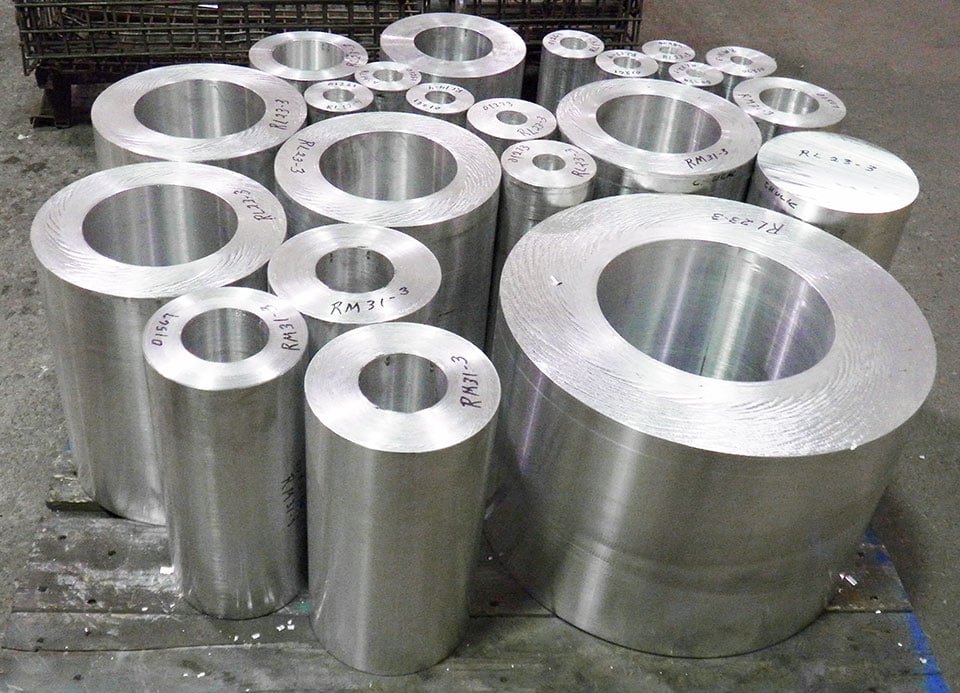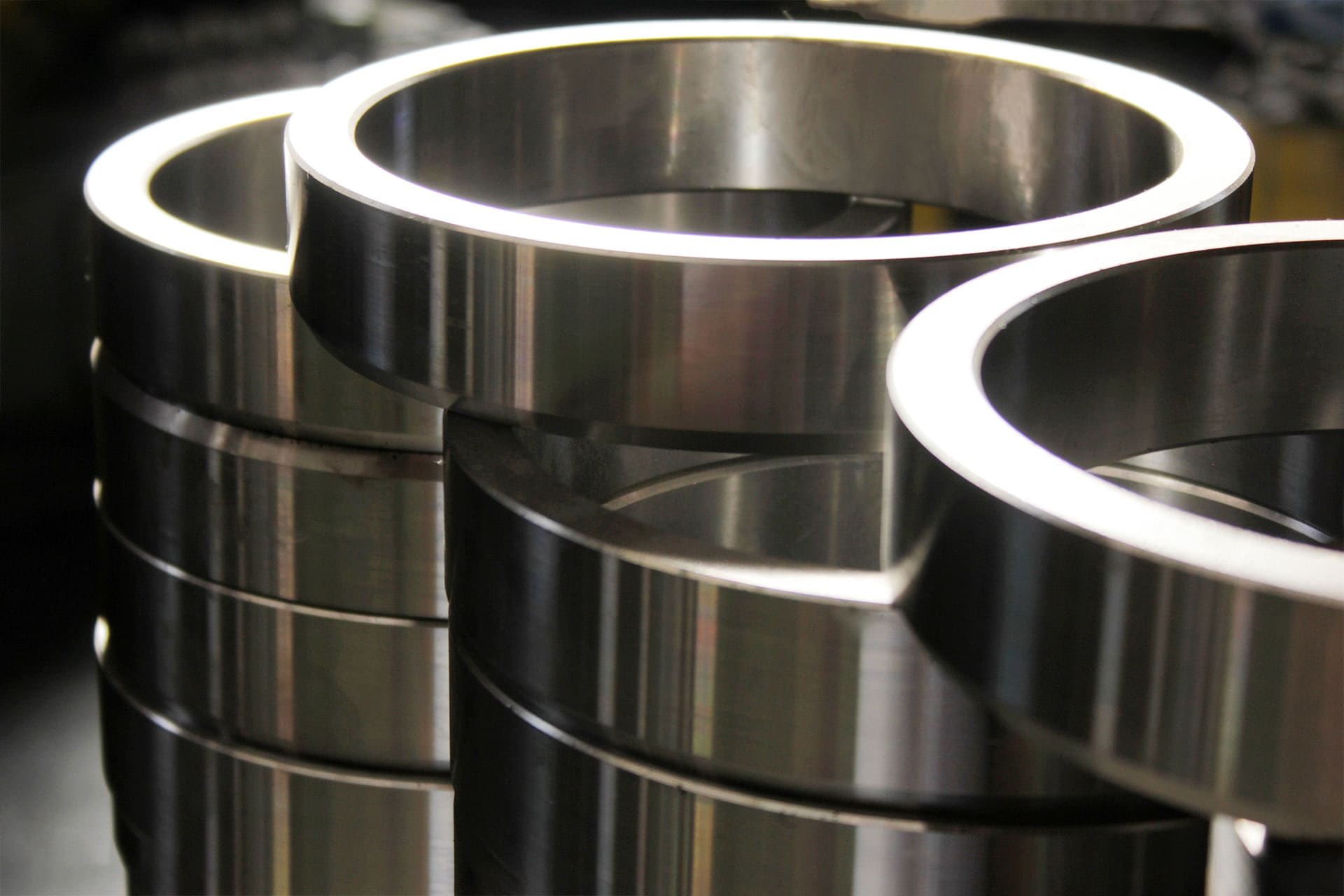Aluminum Foundry and Metal Castings: trusted choices for industrial needs
Uncovering the Advantages and Practical Uses of Light Weight Aluminum Castings in Today's Market
Light weight aluminum spreadings have actually become progressively appropriate in numerous sectors because of their special attributes. Their lightweight nature and resistance to deterioration make them appropriate for requiring applications. Furthermore, the remarkable strength-to-weight ratio supplies substantial advantages in layout and manufacturing. As markets continue to discover their possibility, the full range of light weight aluminum castings' advantages and applications stays to be totally uncovered. What lies ahead for this functional material?
The Lightweight Advantage of Light Weight Aluminum Castings
Numerous products are used in manufacturing, light weight aluminum spreadings stand out mostly due to their light-weight homes. This particular makes light weight aluminum castings an attractive choice for numerous sectors, particularly in aerospace and vehicle applications, where weight decrease is crucial for enhancing gas effectiveness and performance. The lightweight nature of light weight aluminum allows manufacturers to develop components that are less complicated to take care of and mount, ultimately reducing labor costs.
The capacity to produce complex forms without substantial weight fines enables designers to innovate while maintaining architectural stability. Aluminum spreadings can properly change heavier products, bring about considerable financial savings in shipping and functional prices. Their light-weight benefit likewise adds to improved product longevity, as lighter parts often bring about lowered damage on machinery. Overall, the lightweight homes of aluminum spreadings offer manufacturers with an one-upmanship, fostering advancements in item design and effectiveness throughout numerous markets.

Remarkable Corrosion Resistance
Light weight aluminum spreadings possess an all-natural resistance to oxidation, which substantially enhances their durability in numerous atmospheres. This intrinsic home not only adds to their toughness but likewise straightens with the light-weight advantage that light weight aluminum uses. Because of this, light weight aluminum castings are increasingly recognized for their extraordinary rust resistance in many applications.

Normally Immune to Oxidation
One of the standout characteristics of light weight aluminum spreadings is their extraordinary corrosion resistance, which originates from an all-natural oxidation procedure. When exposed to air, light weight aluminum responds to form a thin, safety layer of light weight aluminum oxide. This layer serves as a barrier versus additional oxidation and protects the underlying steel from harsh aspects such as dampness and salts. Unlike other steels, this oxide layer is self-repairing; if harmed, it quickly reforms when exposed to air. This special residential or commercial property improves the longevity of light weight aluminum spreadings in numerous atmospheres, making them ideal for applications in sectors such as aerospace, automobile, and marine. Consequently, the natural resistance to oxidation considerably decreases upkeep costs and raises the integrity of aluminum spreadings popular conditions.
Lightweight Resilience Benefit
The light-weight nature of aluminum castings adds significantly to their resilience, making them a beneficial option in various industries. This extraordinary longevity is mostly attributed to aluminum's natural resistance to rust, which is improved better through anodizing and other surface treatments. Unlike several steels, aluminum does not rust; rather, it forms a protective oxide layer that shields it from ecological damages. This property is especially beneficial in industries such as automobile and aerospace, where weight decrease is essential without endangering stamina. Furthermore, the durability of light weight aluminum spreadings lessens maintenance costs and substitutes, providing economic benefits gradually. Their lightweight sturdiness and corrosion resistance position aluminum castings as an exceptional material for modern manufacturing applications.

Superior Strength-to-Weight Proportion
An impressive feature of aluminum castings is their superior strength-to-weight ratio, which makes them very desirable in various applications. This intrinsic home enables light weight aluminum spreadings to hold up against substantial stress and anxiety while continuing to be lightweight, an essential consider sectors such as aerospace, auto, and production. Engineers often choose aluminum spreadings for parts that need both toughness and minimized weight, improving gas efficiency and performance.
The high strength-to-weight proportion additionally helps with the design of intricate forms and frameworks, making aluminum spreadings functional for facility applications. The ability to keep structural honesty under difficult conditions warranties durability and reliability in items, from aircraft structures to vehicle parts. This benefit contributes to the expanding pattern of using light weight aluminum castings in cutting-edge styles, ultimately causing boosted functionality and performance across varied sectors. The superior strength-to-weight proportion of light weight aluminum spreadings positions them as a pivotal material in modern-day engineering and manufacturing.
Cost-Effectiveness in Manufacturing
Cost-effectiveness in aluminum spreading manufacturing is largely accomplished via decreased product waste and effective production processes. By enhancing layouts and making use of advanced methods, makers can minimize excess material use while keeping quality standards. This technique not only decreases manufacturing costs but likewise adds to a lot more lasting techniques within the industry.
Decreased Material Waste
Minimizing material waste in light weight aluminum spreading procedures greatly enhances production efficiency. By maximizing the style and manufacturing methods, firms can minimize excess scrap and enhance source use. This decrease in waste not just reduces material costs but also adds to a more sustainable production design. The capacity to reuse aluminum additional supports cost-effectiveness, enabling makers to redeem and recycle materials without jeopardizing quality. As the industry significantly concentrates on sustainability, minimized product waste straightens with environmental objectives while simultaneously improving productivity. Inevitably, effective usage of resources enhances the affordable placement of businesses on the market, making aluminum spreadings a positive option in various applications. The tactical strategy to decreasing waste shows a commitment to both financial and environmental obligation.
Efficient Production Processes
While standard manufacturing procedures can incur substantial prices, aluminum spreading provides an extra reliable alternative that improves general manufacturing success. This method minimizes material waste and enables precise control over the production procedure, causing minimized labor and functional prices. The capability to generate complex shapes with less steps even more improves manufacturing, adding to shorter lead times. Furthermore, light weight aluminum's light-weight nature and outstanding thermal conductivity allow for power financial savings throughout manufacturing and in the final application. By making use of contemporary casting modern technologies, manufacturers can attain greater throughput without sacrificing high quality. As a result, aluminum spreading sticks out as an economical option, making it an attractive choice for businesses intending to optimize their manufacturing processes in today's competitive market.
Flexibility Across Industries
Light weight aluminum spreadings show impressive adaptability throughout different industries, as they can be customized to satisfy certain demands and applications. In the auto industry, light weight aluminum spreadings are utilized in engine blocks, transmission real estates, and wheels, providing lightweight yet durable solutions that improve fuel effectiveness. The aerospace industry likewise gains from aluminum spreadings, utilizing them in architectural parts and engine components as a result of their strength-to-weight proportion.
In the consumer items industry, manufacturers use light weight aluminum castings for products ranging from cooking equipment to furnishings, giving both visual charm and functionality. The electronics market uses light weight aluminum spreadings for real estates and warmth sinks, making sure efficient thermal administration. Furthermore, the building and construction industry leverages aluminum castings for architectural aspects and architectural parts, enhancing toughness and layout flexibility. This wide applicability highlights light weight aluminum castings as a necessary source, meeting the diverse demands of numerous markets while maintaining high performance and reliability.
Sustainability and Ecological Impact
As markets increasingly prioritize sustainable techniques, light weight aluminum castings become an environment-friendly choice because of their recyclability and reduced ecological footprint. Aluminum is among the most recycled materials worldwide, with the ability to be repurposed multiple times without degradation of high quality. This characteristic greatly minimizes the need for resources and energy consumption linked with main aluminum production, which is energy-intensive.
Furthermore, light weight aluminum castings add to light-weight styles, leading to fuel efficiency in transport applications such as automobile and aerospace sectors. Their longevity and resistance to rust prolong item lifespans, even more decreasing waste and source usage with time. find more info Furthermore, many makers are embracing liable sourcing and eco-friendly manufacturing approaches, enhancing the sustainability of light weight aluminum casting processes. In general, aluminum castings stand for a useful remedy for companies intending to lower their ecological effect while achieving efficiency and efficiency.
Innovations in Aluminum Spreading Technologies
Current advancements in aluminum spreading technologies have actually greatly enhanced the performance and top quality of manufacturing processes. Technologies such as 3D printing and advanced mold-making techniques have actually allowed manufacturers to produce intricate designs with reduced product waste. This shift not just boosts the accuracy of cast parts however additionally shortens lead times, permitting fast prototyping and faster market entrance.
Furthermore, the unification of advanced computer system simulations help in predicting prospective defects throughout casting, leading to higher-quality outcomes (Metal Castings). Using light-weight alloys has additionally contributed to the development of more powerful, extra sturdy products, accommodating sectors varying from automotive to aerospace
Furthermore, automated casting procedures have emerged, reducing human mistake and enhancing manufacturing rate. Jointly, these developments are changing the light weight aluminum casting landscape, driving higher competition and sustainability in production. As industries continue to progress, these modern technologies will play a crucial role in meeting future demands for efficiency and high quality.
Often Asked Questions
How Do Light Weight Aluminum Castings Compare to Various Other Metals in Regards To Thermal Conductivity?
Light weight aluminum castings show exceptional thermal conductivity compared to lots of metals, such as steel and iron - Metal Castings. Their lightweight nature and efficient warmth circulation make them suitable for applications calling for effective thermal management in numerous markets
What Are the Usual Issues Located in Light Weight Aluminum Castings?
Usual issues in light weight aluminum spreadings consist of porosity, shrinking, additions, and surface irregularities. These issues typically develop from incorrect cooling rates, poor mold style, or contaminations, affecting the overall quality and efficiency of the last product.
Can Aluminum Castings Be Recycled, and Just how?
Aluminum spreadings can be reused properly. The procedure involves collecting, melting, and changing the light weight aluminum, which lessens waste and conserves sources. This reusing adds to sustainability while maintaining the product's buildings for future usage.
What Are the Common Lead Times for Aluminum Casting Manufacturing?
Typically, lead times for aluminum casting production variety from 2 to six weeks, relying on aspects such as intricacy, tooling needs, and manufacturing quantity. Effectiveness can boost with well established distributor connections and optimized production procedures.
Exactly how Does the Surface Area Complete Affect Light Weight Aluminum Spreading Efficiency?
The surface coating noticeably impacts light weight aluminum casting efficiency by affecting rust resistance, visual quality, and rubbing characteristics. A smoother surface improves toughness and capability, while a rougher appearance can improve attachment for subsequent finishes or treatments.
Numerous products are utilized in production, aluminum castings view stand out mostly due to their light-weight Metal Castings homes. When revealed to air, light weight aluminum reacts to develop a slim, safety layer of aluminum oxide. Cost-effectiveness in aluminum casting manufacturing is mainly accomplished with lowered material waste and effective manufacturing processes. Decreasing material waste in light weight aluminum casting processes considerably enhances production efficiency. Ultimately, effective usage of raw materials enhances the affordable placement of services in the market, making light weight aluminum spreadings a favorable option in different applications.